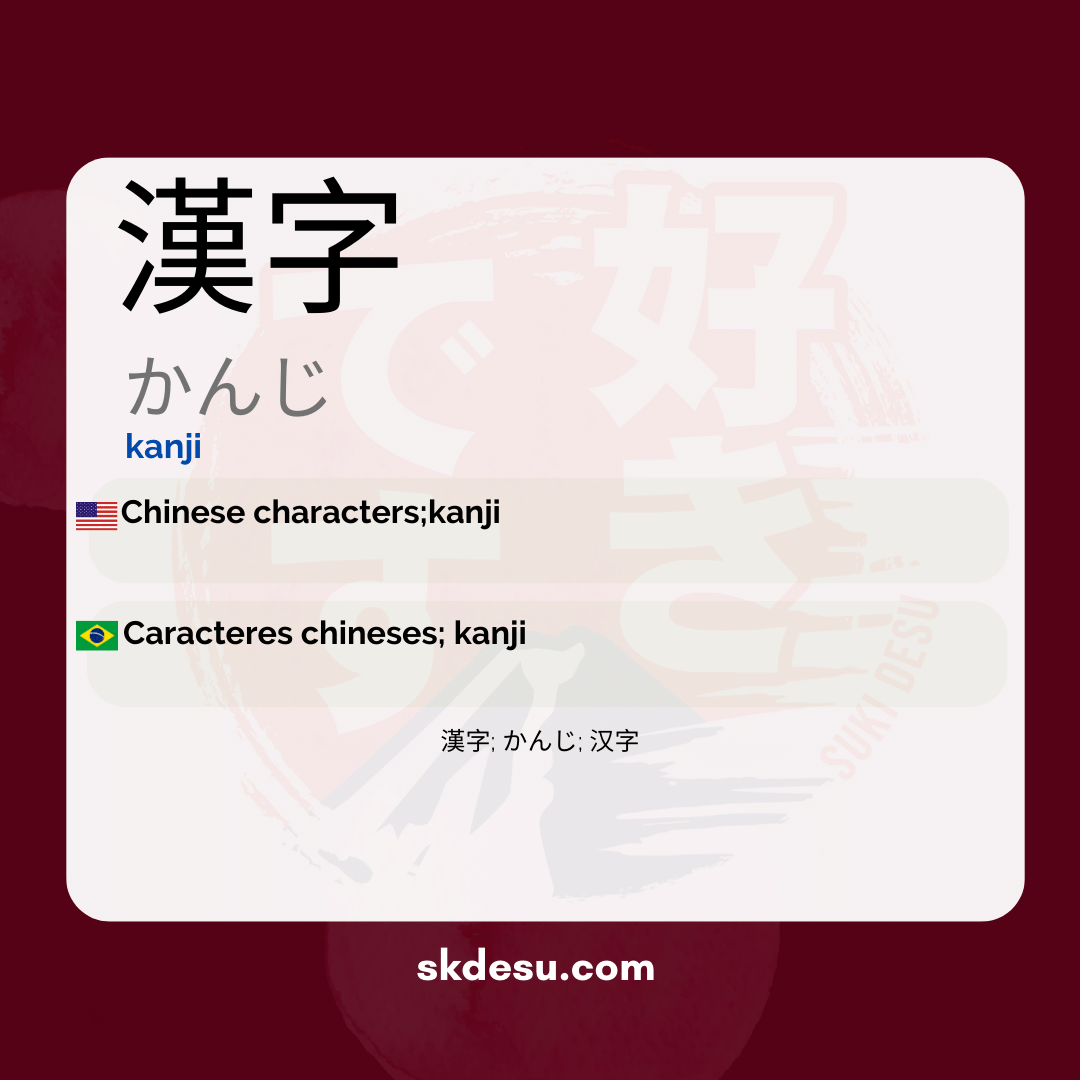Translation and Meaning of: 漢字 - kanji
If you are studying Japanese or are curious about the language, you have certainly come across the word 漢字[かんじ]. It is essential for understanding not only Japanese writing but also the culture and history of Japan. In this article, we will explore the meaning, origin, and everyday use of this word, as well as tips for memorizing it and interesting facts that go beyond textbooks. Whether for beginners or those wanting to deepen their knowledge, this guide will help unravel the secrets behind 漢字.
What does 漢字[かんじ] mean?
The word 漢字[かんじ] refers to the Chinese characters adapted for Japanese writing. Literally, it can be divided into two kanjis: 漢 (kan), which relates to China, and 字 (ji), which means "character" or "letter." Together, they form the term that defines the ideograms used in Japan to this day.
Unlike the Western alphabet, each 漢字 carries its own meaning and can be read in more than one way, depending on the context. For example, the kanji 日 can be read as "hi" (sun) or "nichi" (day), showing how a single character can encompass multiple interpretations.
Origin and history of 漢字 in Japan
The 漢字 were introduced to Japan around the 5th century, brought from China through Buddhist and Confucian texts. Initially, the Japanese used these characters to write in classical Chinese, but over time, they adapted them to represent their own language.
An important milestone was the development of the kana systems (hiragana and katakana), which emerged as simplifications of the 漢字. While hiragana was primarily used by women in the court, katakana served for Buddhist notes. Despite this, the 漢字 remained the foundation of formal and academic writing.
How do the Japanese use 漢字 in their daily lives?
In modern Japan, 漢字 are essential for reading newspapers, books, and even street signs. Although there are thousands of characters, the Japanese government has established a list of 2,136 常用漢字 (jōyō kanji) deemed necessary for everyday use. Those who master these ideograms can communicate effectively in most situations.
A practical example is the word 勉強[べんきょう] (study), which combines two 漢字 to convey a specific concept. Phrases like "漢字を勉強する" (study kanji) are common among students, showing how these characters are rooted in language learning.
Tips for memorizing 漢字 more easily
An effective strategy is to learn the radicals, the basic components that make up the 漢字. For example, the kanji 語 (language) contains the radical 言 (speech), which appears in many other words related to communication. Identifying these patterns helps to decipher unknown characters.
Another tip is to associate the 漢字 with images or stories. The kanji 木 (tree), for example, visually resembles a trunk with branches. Techniques like this are even used in official teaching materials, such as the books in the "Remembering the Kanji" series.
Vocabulary
Expand your vocabulary with related words:
Synonyms and similar words
- 漢字 (Kanji) - Characters used in Japanese writing, originating from China.
- かんじ (Kanji) - Reading in hiragana for the kanji characters.
- 汉字 (Hànzì) - Chinese term for the characters used in the Chinese language.
Romaji: kanji
Kana: かんじ
Type: noun
L: jlpt-n5
Translation / Meaning: Chinese characters; kanji
Meaning in English: Chinese characters;kanji
Definition: A type of writing that developed and spread in China.
Quick Access
- Vocabulary
- Writing
- Sentences
How to Write in Japanese - (漢字) kanji
See below a step-by-step guide on how to write the word by hand in Japanese. (漢字) kanji:
Example Sentences - (漢字) kanji
See below some example sentences:
Bushu wa kanji no kōsei yōso o hyō shimasu
Bushu represents the structural elements of kanji.
The radical represents the components of Kanji.
- 部首 - means "radical" in Japanese and is used to classify kanji (Japanese ideograms) according to their features and components.
- は - topic marking particle, which indicates that what comes next is the subject of the sentence.
- 漢字 - means "Chinese characters" and refers to the ideograms that were imported from China and adapted into the Japanese language.
- の - possession particle, which indicates that what follows is the possessor or constituent of the object.
- 構成要素 - means "constituent elements" and refers to the strokes and components that make up kanji.
- を - direct object particle, which indicates that what follows is the direct object of the sentence.
- 表します - means "represents" and is the verb that indicates the action that the radicals perform when composing the kanji.
Kanji wa nihongo no juuyou na youso desu
Kanji is an important factor in Japanese.
- 漢字 - Kanji (Chinese characters used in Japanese writing)
- は - Topic particle
- 日本語 - Japanese language
- の - Possessive particle
- 重要な - Important
- 要素 - Element
- です - Verb to be in the polite form
Other Words of this Type: noun
See other words from our dictionary that are also: noun

